Surrounded by a high fence, the Arch of Constantine seems unapproachable to a modern visitor. Unlike its fellow arches in the forum — the Arch of Titus and the Arch of Septimius Severus — one cannot walk under its lofty arches or sneakily skim its marble walls. It is untouchable. It is the Arch of Constantine… or is it?
Constructed in the wake of Constantine’s defeat of Maxentius, which effectively reunited Rome under one ruler, the arch is about 60 feet tall and 75 feet wide. Identical inscriptions on the north and south sides praise the first Christian emperor for avenging the republic by his military victory. Unlike the sole emperors who preceded him, Constantine was not selected as the sole inheritor of the imperial seat, but he started a war to win that title. Naturally, his namesake arch’s elaborate visual program should be all about the legendary emperor and his endeavors, right?
WRONG! Close examination of the tripartite arch reveals a complex, chaotic assemblage of reliefs made over the preceding two centuries. Smarthistory, a fantastic resource on all sorts of Art History, has created the epic color-coded diagram below, which details the origins of the arch’s various components and their formal names. You’ll see that pieces originate from the times of Trajan, Marcus Aurelius, Hadrian, and of course, Constantine himself. So, Constantine (or his proxies) erected a monument using fragments of earlier, extant monuments. This practice is typically called spoliation, and the respective fragments are pieces of spolia.

This post cannot break down each piece of sculptural imagery, but we’ll take a close look at one example from each period represented. Let’s start with the captured Dacians, likely from Trajan’s nearby forum, of which four stand in the round within the Attic Story. From the first two decades of the 2nd century CE, these figures represented Trajan’s massive victory over Dacia; while the infamous column of Trajan details the conquest in narrative form, these massive captive figures brought the conquered men into Rome, reminding its citizens of the accomplishments of their commander.
The men are draped in heavy cloaks, wearing shorter tunics. Their hands seem to be bound, and their heads are tilted downwards. On the arch, they sit at its highest story. It almost seems like they look down at viewers, surveilling or maybe even speaking to people walking about. To me, these figures function as witnesses of conquest and Roman victory. Whereas we have news coverage and film footage to communicate things that happen in faraway places (and times), the Romans had oral history and plastic imagery, like these statues. So, Constantine’s arch includes witnesses to epic victories from nearly 200 years earlier… what else is going on?
Below the captive Dacians, there are a series of eight Hadrianic roundels. They feature hunting scenes and sacrifices to Diana, Apollo, Hercules, and Silvanus, respectively. Here, on the left side, we find Hadrian and his possey preparing to depart for a hunt, they seem to travel through an arch reminiscent of the one before us. Meanwhile, on the right, the group approaches an altar and statue of Silvanus, god of the forest.
The imagery does not allude to great victories or legendary battles. Instead, we find a pious emperor and his devoted companions. Piety was a desireable, even mandatory, trait of a beloved emperor. Also… take note… on the left, the sinuous nude figure is, of course, Antinous, Hadrian’s young lover.
Next, we find eight rectangular reliefs from the period of Marcus Aurelius. They line the attic story in between the four Dacian captives and capture monuments in Marcus Aurelius’ campaigns against the Sarmatian, Gothic, and Germanic peoples. Victory is again a critical theme; the emperor is pictured with submissive Kings and loot from battles. On each side, one relief places the scene before a monumental arch, much like the one on which they are displayed. Remember, we saw the same play on one of Hadrian’s roundels.
Finally, let’s take a look at the largatio scene from Constantine’s own time. Largatio is a benevolent act of the emperor whereby he offers gifts to his troops. In addition to the largatio scene, we find depictions of Constantine’s defeat of Maxentius and other depictions of the emperor among his people. The figures are much less naturalistic; they are obviously from a different time than the classicizing Hadrianic roundels above. Not too long ago, this precise example was considered evidence of “artistic decline,” but there is another (much more productive way) to look at these changes.
To a passerby, these short, outline figures were easily legible. Their forms were delineated and demand no intense scrutiny. Constantine was placed in a central location, larger than the other figures, he was easily recognizable. Consequently, his benevolence and status were made clear… the scenes were immune to questions of content or plot.
On the opposite relief on the same side, we find the emperor adressing his people. Yet again, the scene is situated before a series of architectural arches. Certainly, these cannot be simply identified as a ‘triumphal arch’ like the earlier examples. However, the connection to the monumental architecture before which a viewer stands is undeniable.
Other than the Trajanic figures, each group of reliefs is situated before some arch-like form. I think this can hardly be understood as a coincidence. The arch plays with imagery and with its viewer. Each of the great emperors finds himself (with troops and companions) afront the archway; so too does a Constantinian viewer find herself. Does this imagery inspire anxiety that the emperor lurks around the corner? Does it create a parasocial bond between old emperors, Constantine, and everyday people? Was it a coincidence dictated by the traditions of Roman Art? That’s for you to think on, and perhaps a question for a larger research project.
Let’s get back to that main question… is this arch really Constantine’s? I say, yes. Although the imagery does not center on the first Christian emperor alone, it does place him in a longer tradition. Constantine, unlike the emperors who preceded him, was not hand-picked. He started a war to defeat Maxentius and claim the shared title for himself alone. So, he needed to curate legitimacy by placing himself amongst the great men of the past.
Of course, at the same time, he collects a representative sample of deeds to remind viewers what made emperors of the past so legendary: winning battles, praising gods, and winning more battles. Given that Constantine himself did these things (and more) he also reminds viewers that he was worthy of imperial status.
So yes, this is the Arch of Constantine. And no, this is not all one could say about the iconic monument, but it’ll do for today.
If you have any thoughts or questions, be sure to share them in the comments. I love hearing from you all!

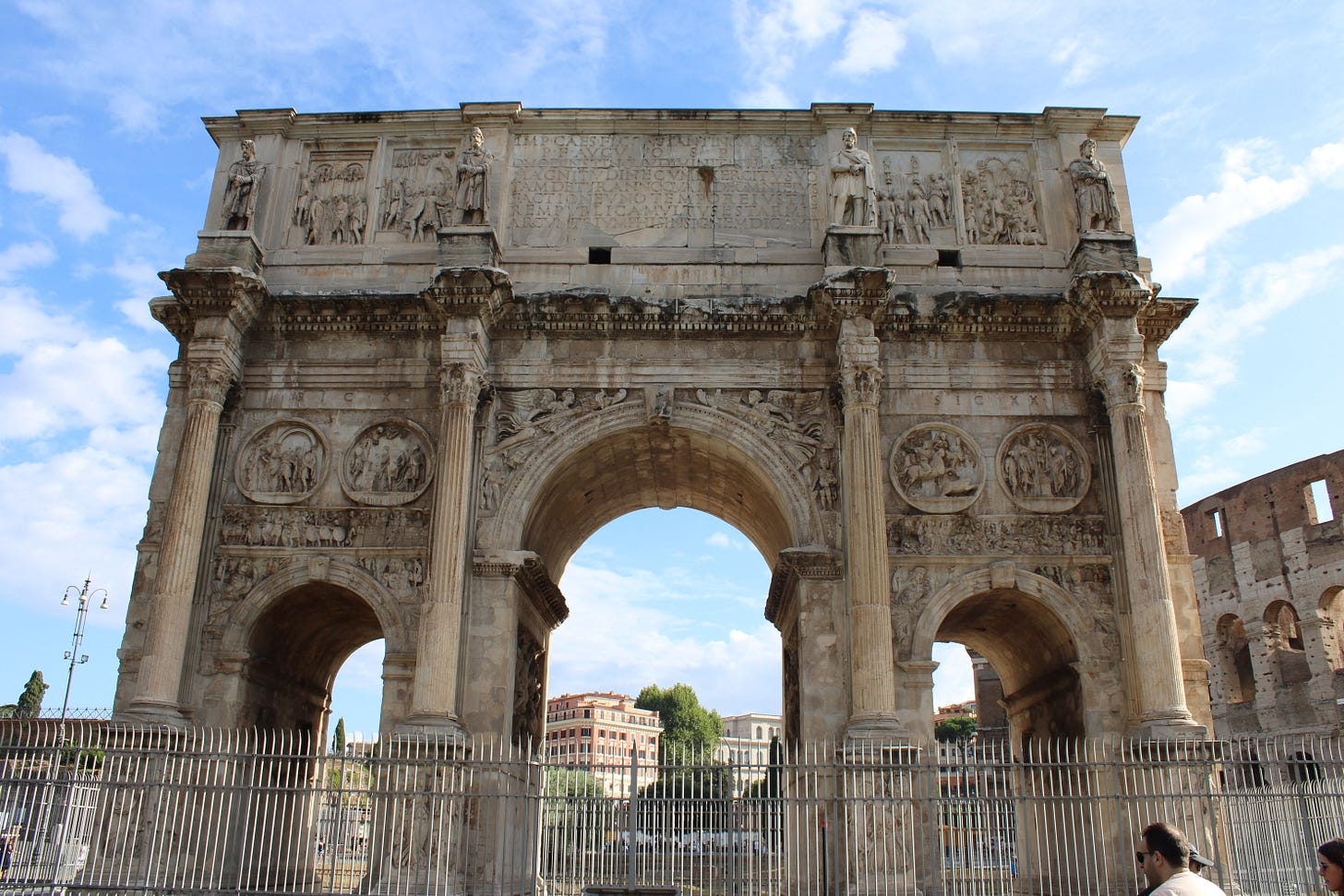
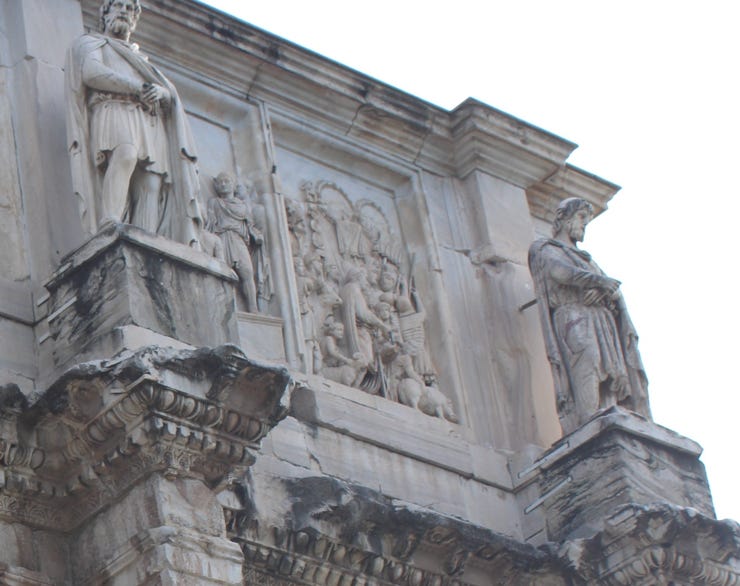
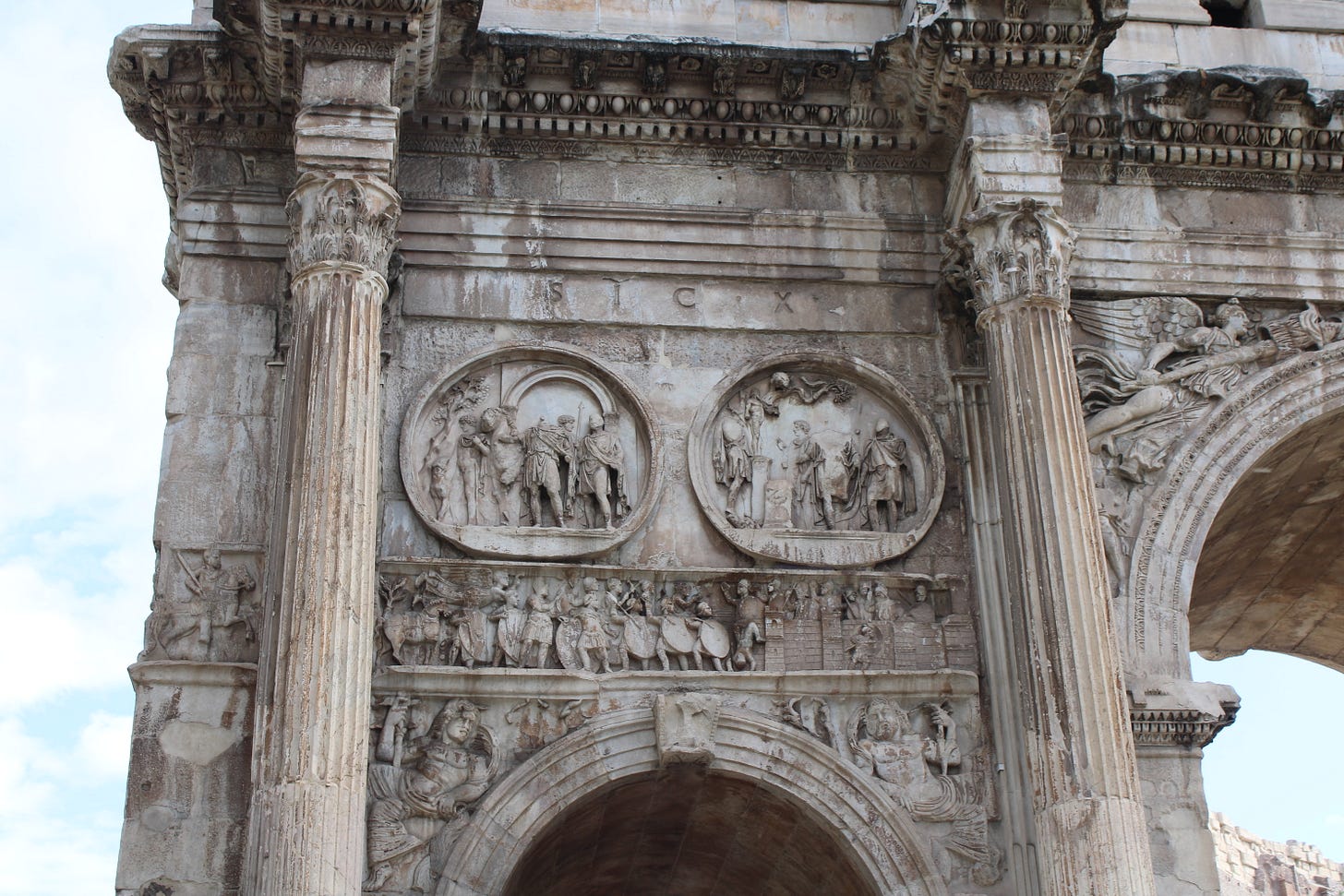
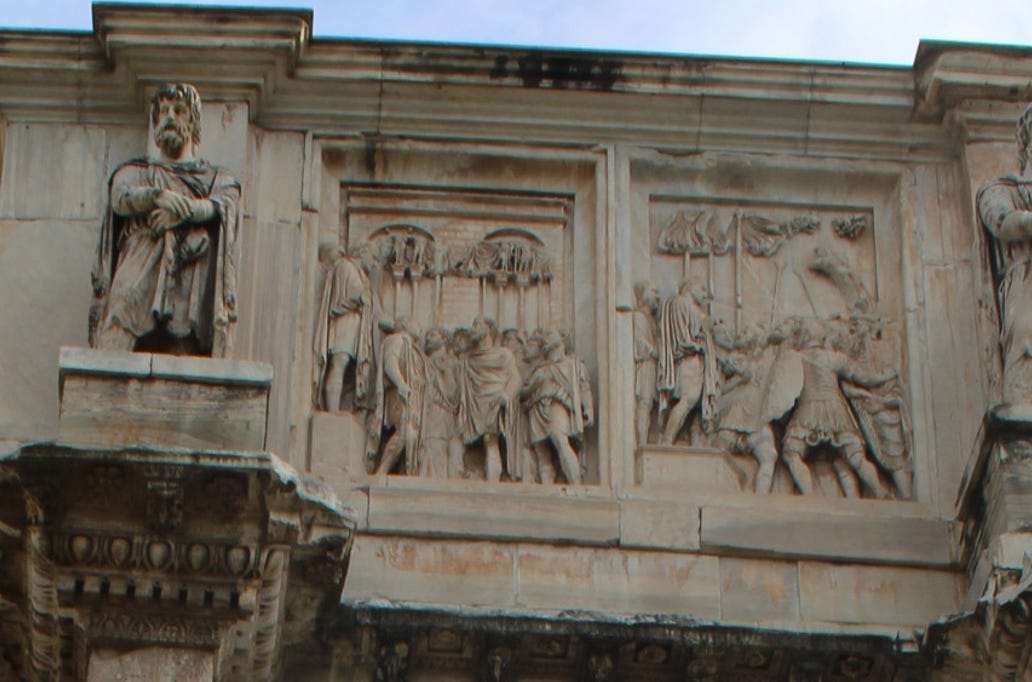
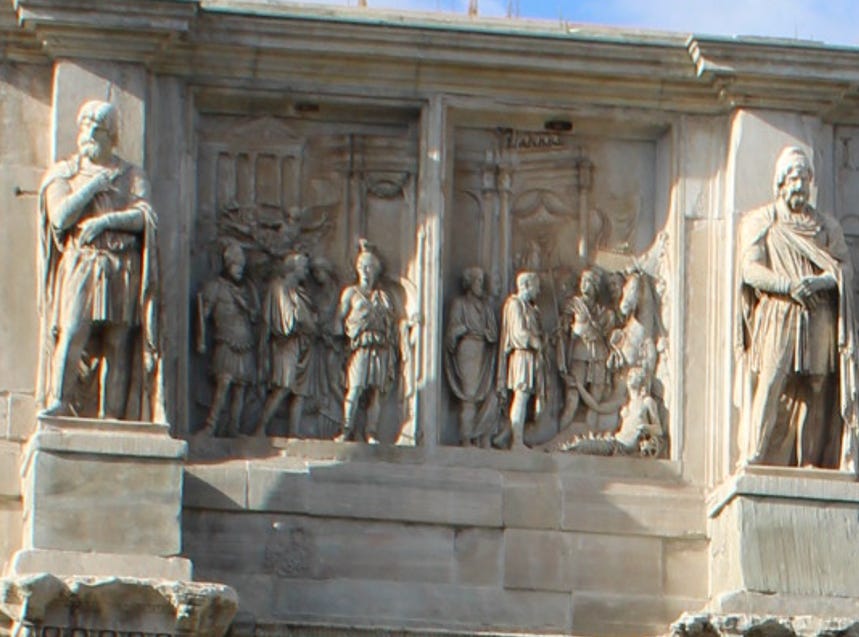
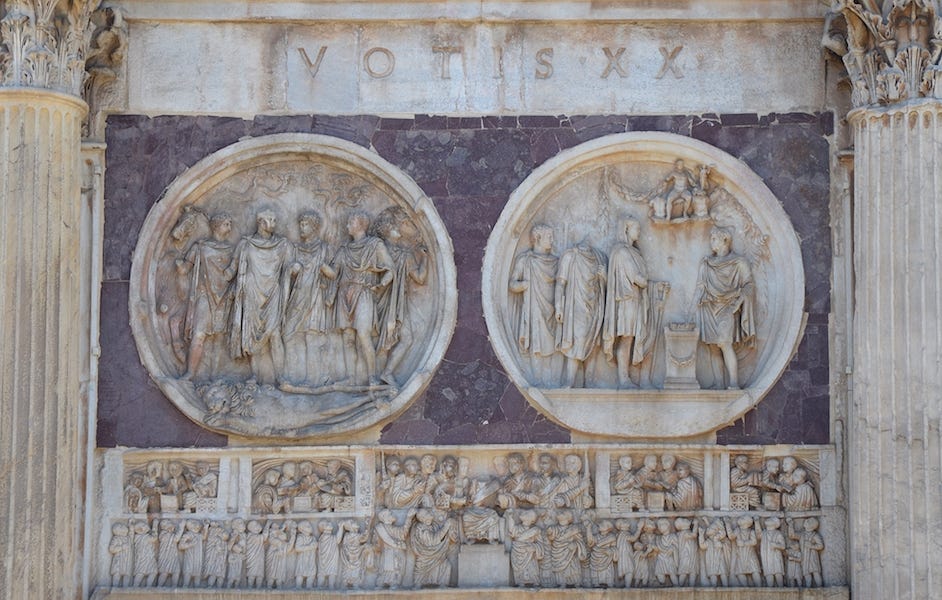
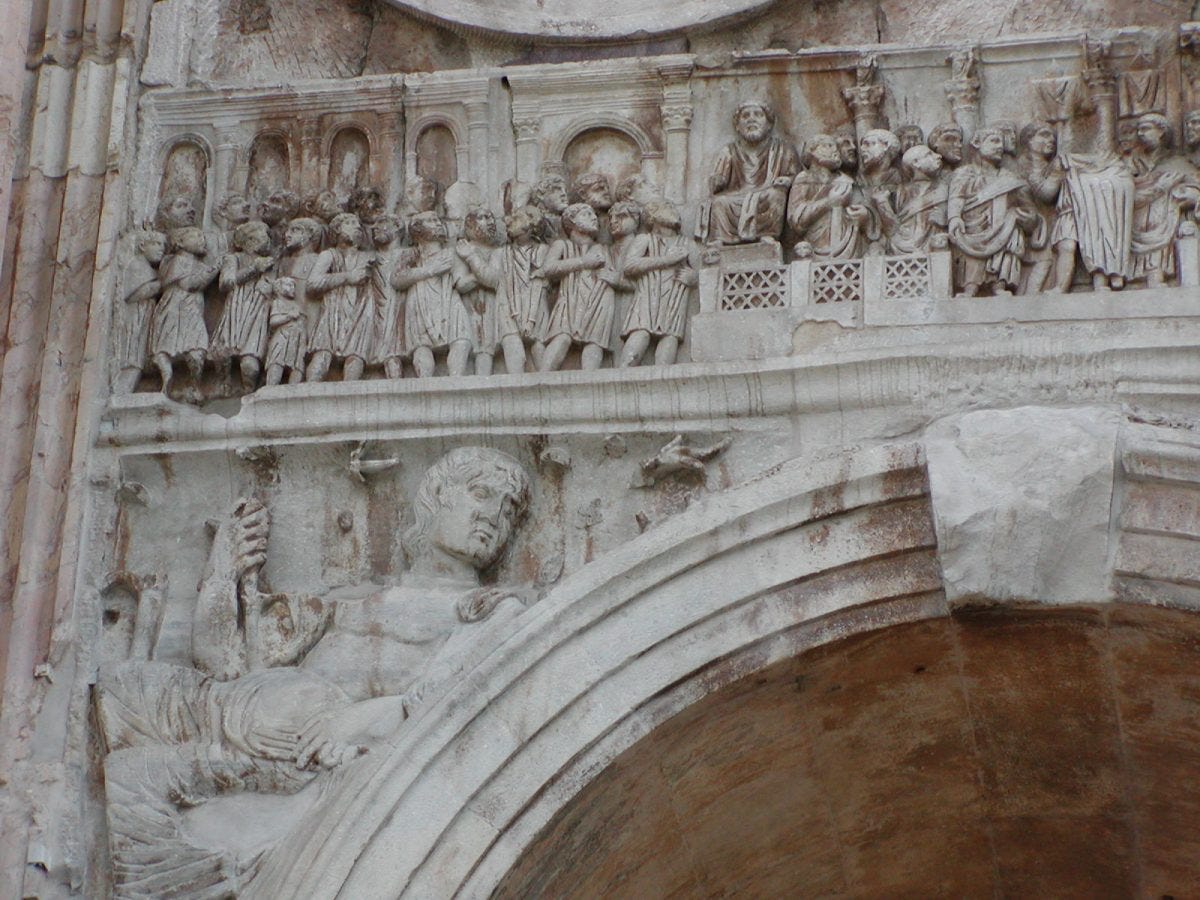
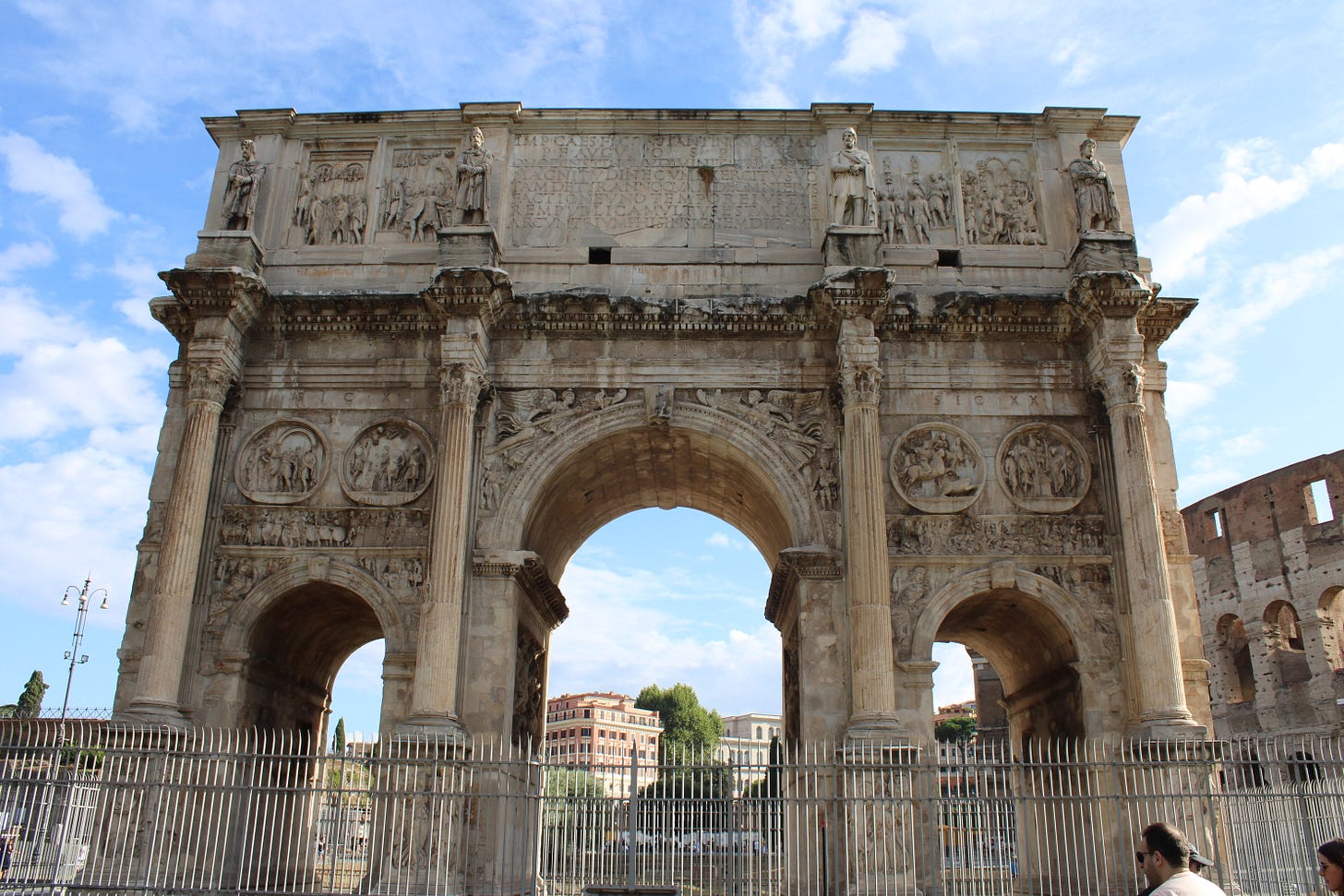
Wish I could run down for another look after your unpacking. I also wonder about economic factors: get the triumphal arch up quickly and cheaply with the spoliations.
Fantastic work as always!! One of my favourite monuments of all time… and started my obsession with researching the use of spolia as a political and cultural tool in Late Antiquity & the Middle Ages! Well done on another great analysis xx